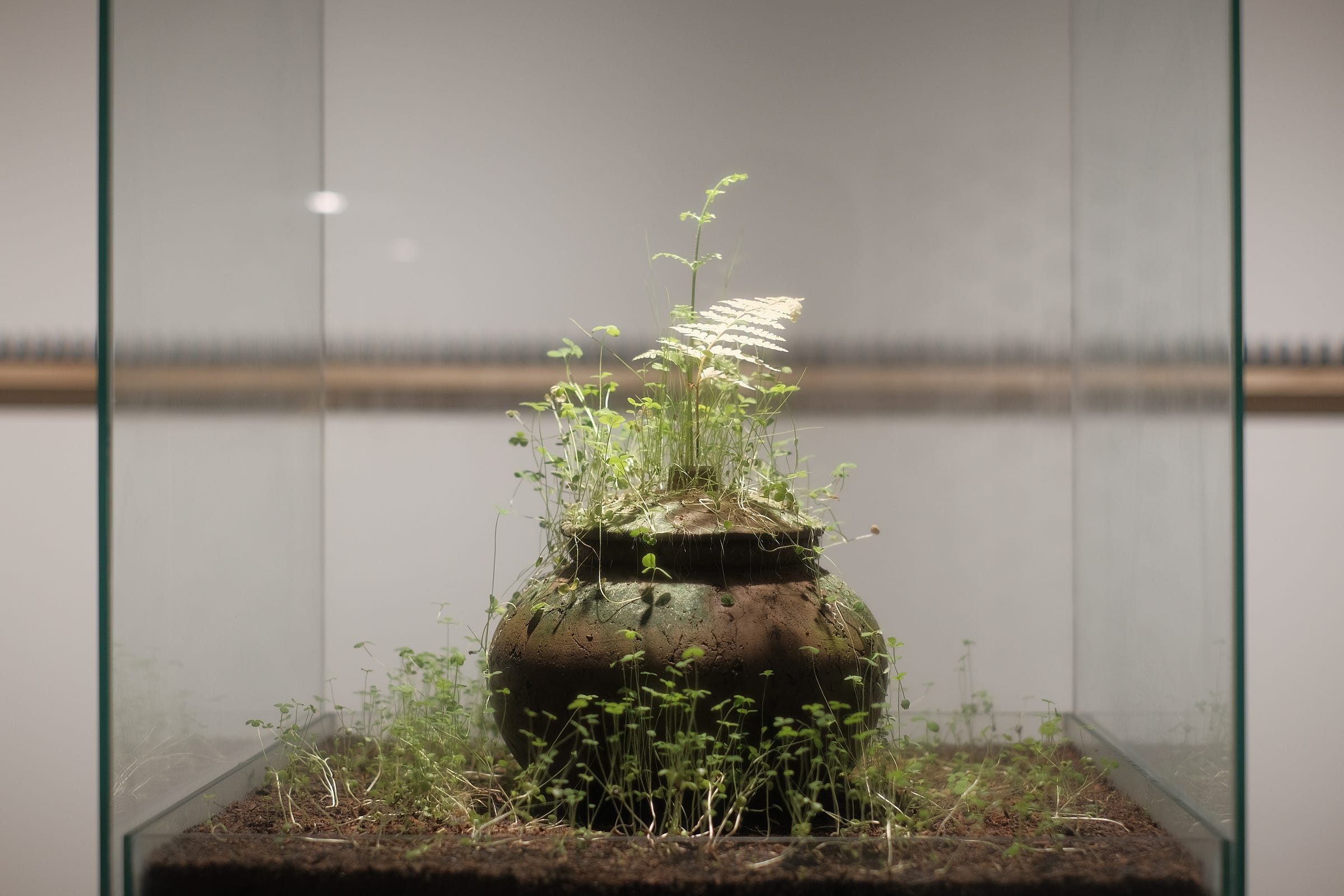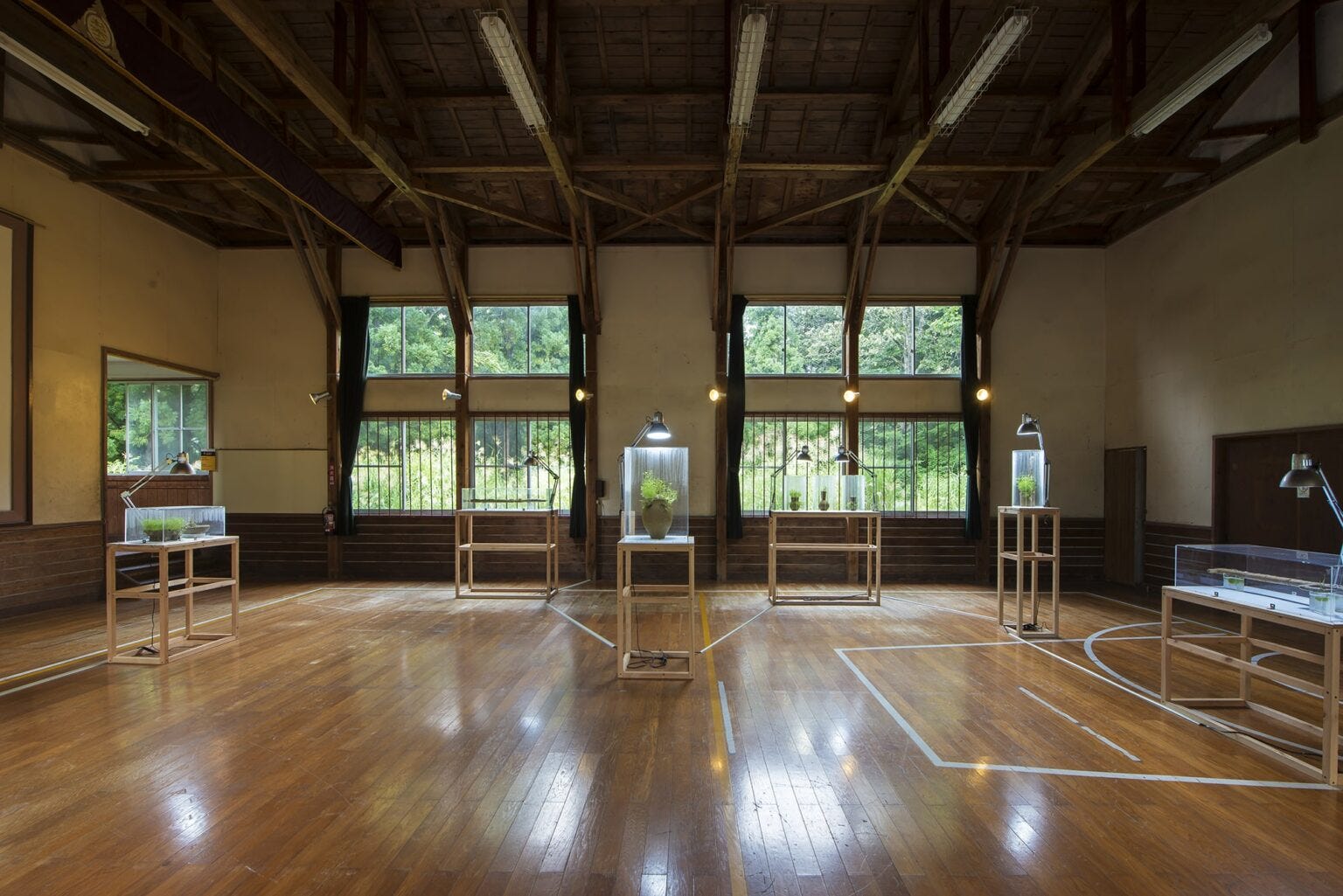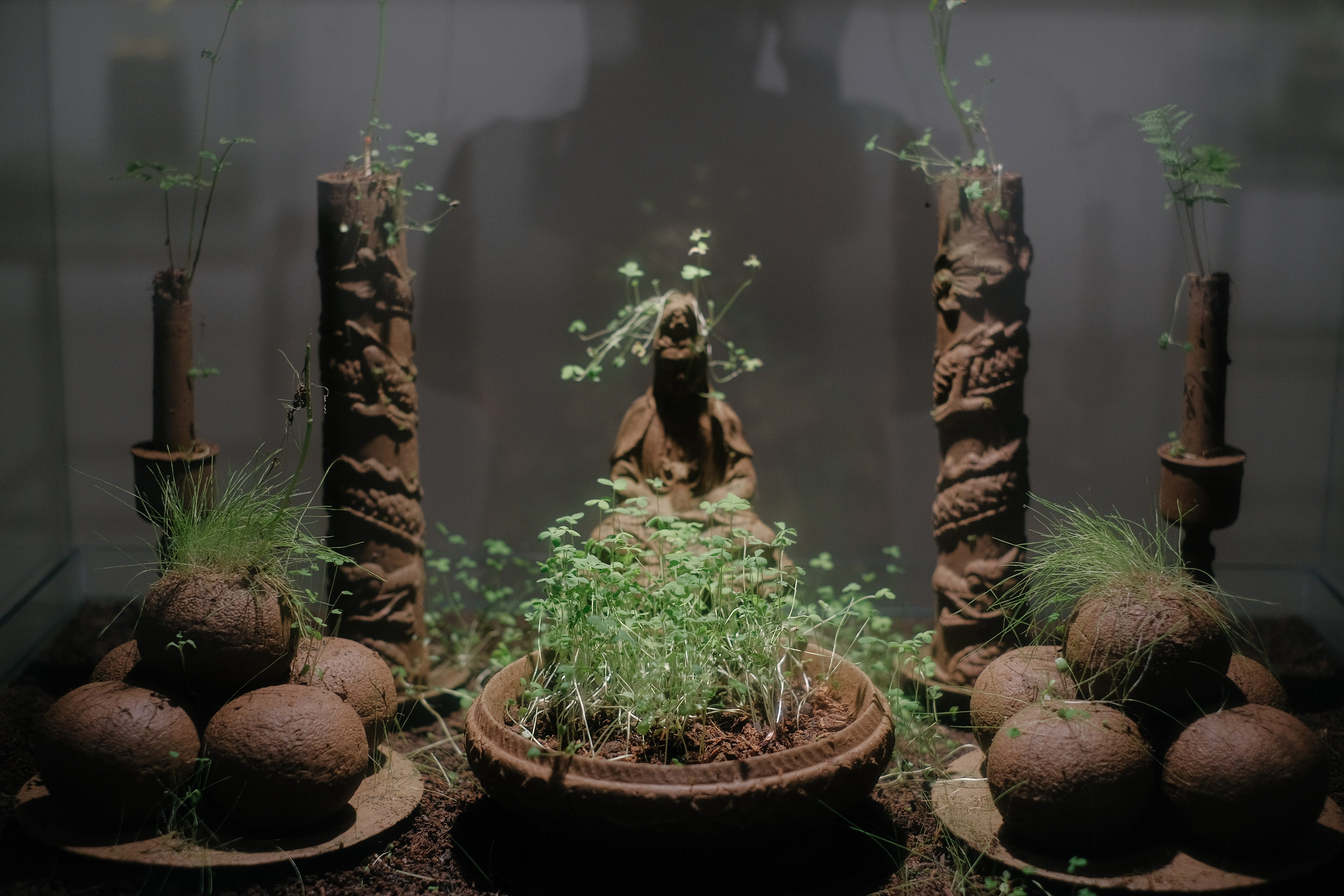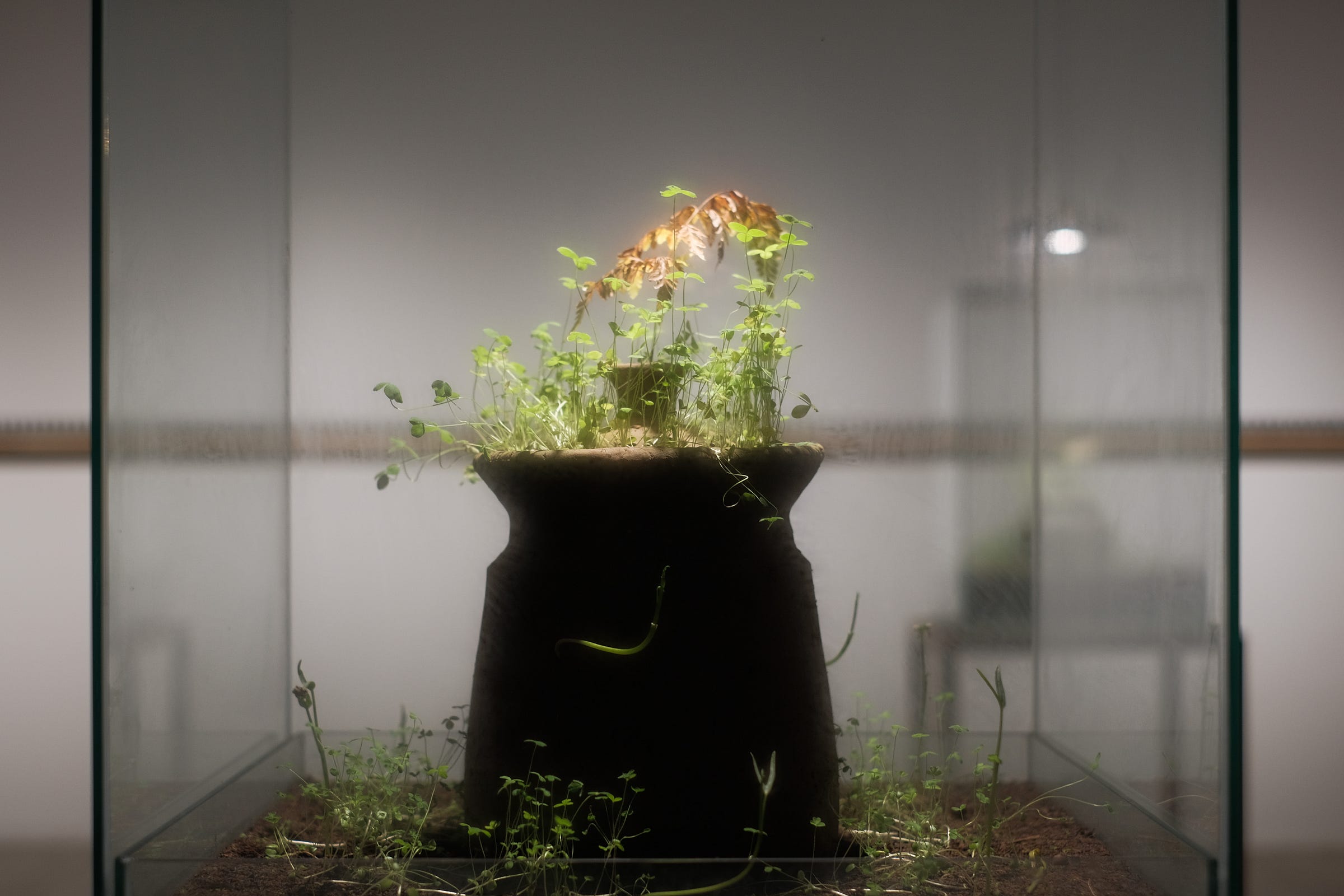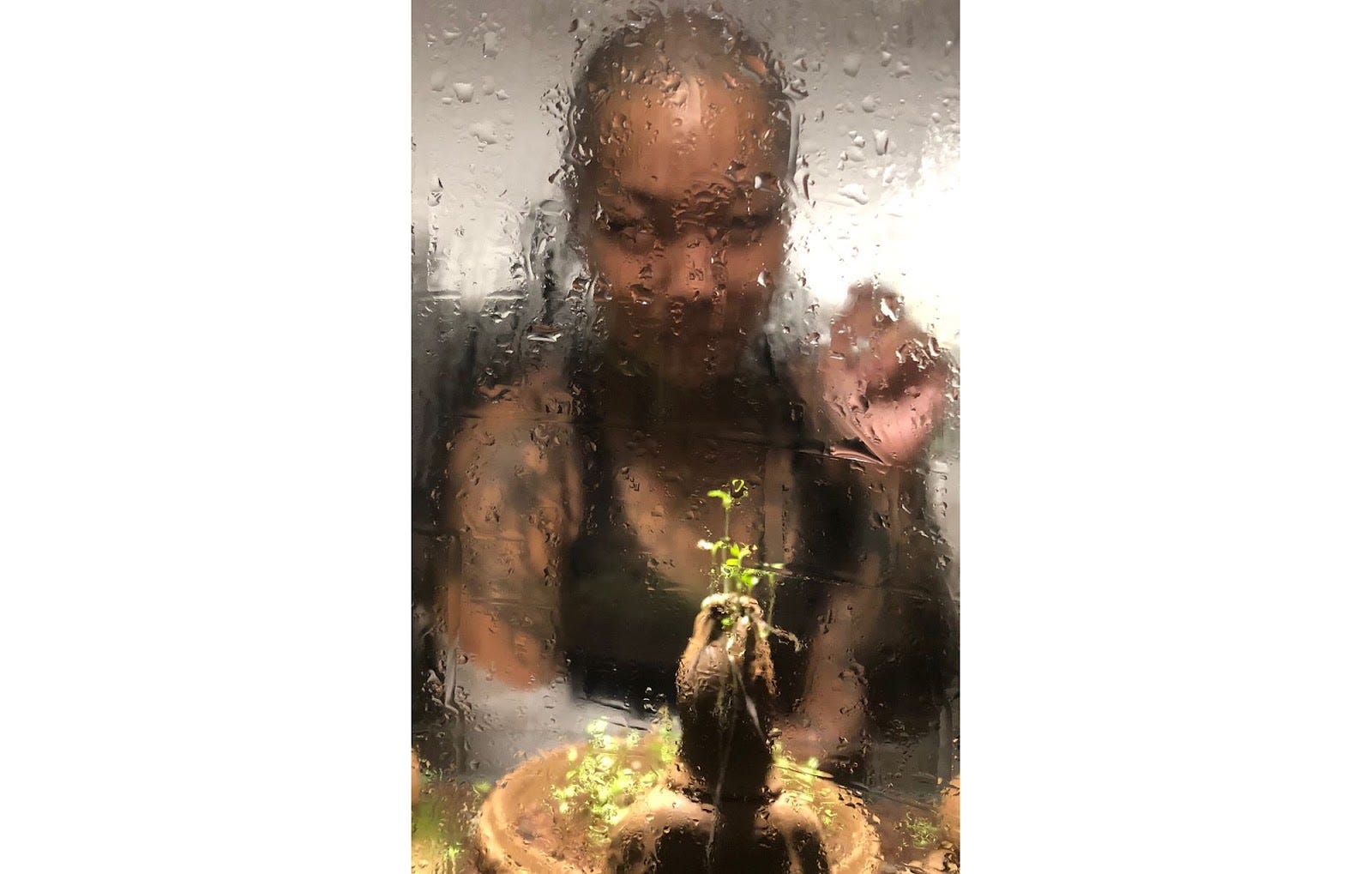Through and into the Looking-Glass
An experiential retracing of 'The Transitory Nature of Earthly Joy' by Albert Yonathan Setyawan at the Tumurun Museum
To recount The Transitory Nature of Earthly Joy by Albert Yonathan Setyawan at the Tumurun Museum in 2024 is to brave the drift of memory for a show dense in images. There is no promise of accuracy, nor attempt at critique — only an admission of savouring the ‘moving through’.
Oh, Kitty! how nice it would be if we could only get through into Looking-glass House! I’m sure it’s got, oh! such beautiful things in it! Let’s pretend there’s a way of getting through into it, somehow, Kitty. Let’s pretend the glass has got all soft like gauze, so that we can get through. Why, it’s turning into a sort of mist now, I declare! It’ll be easy enough to get through—’
Alice in Wonderland: Through the Looking-Glass, Lewis Carroll (1865)
Sometime last year, on a visit to Solo, Surakarta, I dropped by the Tumurun museum where I encountered the artist in situ. Albert worked with practiced fluency, conversing easily with me as he worked away at a simple desk amid half-arranged assemblages of empty vitrines. Having arrived maybe about a week ago to prepare for the show, he seemed both excited and comfortable in the sprawling process of assembling its various parts.
The clay and plants couldn’t be shipped; they needed to be prepared on-site. The purpose of the glass casing is to protect the clay and keep it moist so the plants can continue to grow.
Albert Yonathan Setyawan, Artist talk at Tumurun Museum, June 8, 2024 (transcribed and translated from Bahasa Indonesian to English)
On the opening night of the exhibition, a thick condensation coated the surface of the glass cases, creating blurry filters for the unfired earthenware objects within. The experience of watching beads of water roll down the glass interiors, unearthed a childhood memory of being transfixed by the trajectory of raindrops, traveling down the windowpane of my mother’s car in a tropical storm. Here, the experience was inverted—the water droplets came from within, and I was on the outside looking in. Change—a natural and elemental process—was contained and made perceptible. The miniature nature of the arrangements also gave me a sense of being privy to some intimacy.
And as a result, we longer see ourselves as the subject viewing an object, but we become part of the space, the cohesive experience between the object and ourselves.
Mizuma Conversations | Dialogue between Yvonne Wang and Albert Yonathan Setyawan Source
The glass cases contribute significantly to the phenomenological quality of the works by serving as thresholds. Typically transparent, glass would normally invite a seamless connection between these realms, yet here it brings an awareness of interstice, through its changing opacity. Depending on when one encounters the work, the works can shift between varying states of visibility and legibility. The clay pieces within, infused with seeds and weeds, also hold their own secrets: over time, they reveal unique and unpredictable characteristics. Their enigmatic nature reminds me of the thought experiment Schrödinger’s Cat — in which a cat, sealed in a box with a vial of poison, a radioactive atom, and a Geiger counter, exists in a paradoxical state of being both alive and dead.
When you stop giving them a literate or articulate read … and instead look at them perceptually, you find that your eye ends up suspended in midair, midspace or midstride: time and space seem to blend into the continuum of your presence.
Seeing Is Forgetting the Name of the Thing One Sees: A Life of Contemporary Artist Robert Irwin (1982), Lawrence Weschler
Albert’s vitrines do not merely house objects but enclose ongoing transformations, revealing themselves through emergence and dissolution—a plant shoot unfurling, a spidery crack spreading across the belly of an urn, white webbing coating fresh seedlings. These vessels, replicated from traditional funeral vessels meant to contain ashes, instead cradle seeds—sparks of life. As the seeds germinate, the urns, embedded with new growth, refuse to remain tombs; instead, they become incubators of potential. I was also amused to find at times, small insects scuttling across the expanse of the enclosures, impervious to their complicity within the work of art.
Every vitrine was its own unique biosphere, shaped by external conditions within the museum—room temperature, humidity, and placement—all influencing the processes inside. Roots pushed through cracks, condensation cycling between liquid and vapor, rendering both form and formlessness. The work’s potency lay in the mutability of its embodiment—every occurrence was an essential part of the artwork itself. The act of looking and peering through also became part of the experience, as each work revealed different characteristics depending on the viewer’s vantage point. In certain instances, one’s visage would also be reflected in the glass, folding the viewer’s presence into the surface of the work.
All aspects of the work collapse into the present, at the moment of recognition.
Entrapped in being, we shall always have to come out of it. And when we are hardly outside of being, we always have to go back into it.
“The Dialectics of Outside and Inside.” in The Poetics of Space (1994),Gaston Bachelard.
An early iteration of The Transitory Nature of Earthly Joy series was showcased as part of the Karekimata Project at the Echigo-Tsumari Art Triennale in 2018. In this installation, Albert crafted replicas of prehistoric farming tools and pottery from Japan's Yayoi period, demonstrating his early interest in themes of time and impermanence.
Unlike a typical display of artifacts, for the Tumurun exhibition, the artist positioned the clay objects on damp soil and compost, framing the pieces within an immersive landscape. Gazing into the glass enclosures, one felt drawn into their worlds. In this 2024 development of the project, he also expanded his subject matter beyond farming tools to include esoteric objects. Other vitrines in this collection housed items from Chinese spiritual traditions—urns, altar sets, ancestral tablets—yet the work was not explicitly religious. While aware of their symbolic weight, the artist presented these objects as open-ended, allowing the audience to encounter their own associations. Religious symbols emerged: a slip-cast Buddha, a Guanyin statue from Singapore. Many of the objects were replicas of existing artefacts, worldly items, left to deteriorate or transform over time.
A graduate of Kyoto Seika University’s PhD program in Ceramic Art, Albert has lived and worked in Japan for over a decade. His sculptural practice possesses a minimalist approach to material that feels inherently Japanese in principle. It honors the materiality of clay while shedding light on clay as a living process—one of transformation and becoming—allowing the will and integrity of the material to speak for itself. By planting seeds in his objects, he challenges expected outcomes of ceramic-making which is often towards forming an object, by altering its objecthood by subjecting it to naturally disruptive conditions. The involvement of body is not incidental—it is inscribed in the work itself.
What I’m doing now is based on the physicality of my own body. I cannot do what I do without realizing that I am this body.
Mizuma Conversations | Dialogue between Yvonne Wang and Albert Yonathan Setyawan Source
Another notable piece in the exhibition is Annica: Statues (2024), a series of 460 terracotta sculptures created through the process of slip-casting. Over time, as a single mold is used repeatedly, its interior gradually degrades, the once-defined Buddha figures become unrecognizable, features dissolving with each successive casting—embodying the Buddhist concept of impermanence, underscoring the exhibition’s namesake and the experience of memory and forgetting.
March 2025 found me back at the Museum, a year after the works had been seeded. I was curious as to how they had transformed beyond their early conditions. Some of the vitrines had been relocated across the museum ground, the ones outside were dense with tangled plant matter while others rested inside the museum office, separated by yet another layer of glass. The year-long transformation was subliminal, the overall effects of time and nature yielded striking and chaotic results—new alchemical formations had occurred, shaped by the interplay of tropisms over time.
Mold encrusted the moist clay surfaces like a natural glaze, urns revealed dark cracks under the force of growing shoots and sudden eruptions. One urn outside the museum had been entirely enveloped in dark, stringy roots—beautiful in a way that no human hand could replicate. Here, form was shaped not by the artist alone but by the consequences of decay and persistence. Some plants, reaching toward the sun but unable to push past the confines of the glass, bent against the top of the casing, browned, and wilted—perhaps cut off from water and nutrients, their own growth becoming an obstacle to survival. Meanwhile, at the base of the vitrines, plant life thrived in the damp peat, a stark contrast to the struggle above. The work captured the plurality of life and death.
My mother died when I was a first-year university student. By the time I was about to graduate, I felt mentally and spiritually exhausted. I left the church and just wanted to focus on art. Somehow, I came across the Theosophical Society, which encouraged open-minded inquiry into world religions and philosophy. From there, I was exposed to Buddhism, meditation, and the mandala.
Mizuma Conversations | Dialogue between Yvonne Wang and Albert Yonathan Setyawan Source
What I enjoyed most about The Transitory Nature of Earthly Joy is that it abandons all dialectic of object and space in favour of enmeshment. Albert extends the notion of the artwork beyond clay, beyond material and artefact, into a porous space where everything and the body are in constant negotiation. To participate in the work is not just to witness, but to become implicated in its being.
So much is focused on the output and not the process. All these beautiful objects weren’t so beautiful when they were in the studio. All that mud, glaze, and dust. They are born of mess.
Mizuma Conversations | Dialogue between Yvonne Wang and Albert Yonathan Setyawan Source
Albert Yonathan Setyawan
Albert Yonathan Setyawan (b. 1983, Indonesia) is a contemporary ceramic artist based in Tokyo, Japan. Concerned with repetitions—why we form patterns in daily life, as well as the materiality and genealogy of clay in cultural context, Setyawan has built an artistic practice in the field of contemporary ceramic art, while also translating his conceptual ideas into various mediums such as drawing, multi-media installation, performance and video documentation.
Setyawan earned his MFA degree in Visual Art from Bandung Institute of Technology, Indonesia. Following that, he moved to Kyoto, Japan, to continue his research in contemporary ceramic art at Kyoto Seika University, where he received his doctoral degree. He participated in several major exhibitions such as the 55th Venice Biennale in 2013; SUNSHOWER: Contemporary Art from Southeast Asia 1980s to Now at Mori Art Museum, Tokyo, in 2017; and Contemporary Worlds: Indonesia at the National Gallery of Australia, ACT Canberra, in 2019. (Source)
Tumurun Museum
Museum Tumurun in Solo, Indonesia is at the forefront of supporting art education, with a diverse collection of artworks ranging from seasoned maestros to budding young artists. Located in the heart of Surakarta, the museum is present in the community to promote easy access for everyone from all walks of life.
Jl Kebangkitan Nasional No. 2 Sriwedari, Laweyan, Surakarta, Jawa Tengah 57141
Transitory Nature of Earthly Joy
Albert Yonathan Setyawan
Tumurun Museum
8 June 2024 – 12 January 2025




